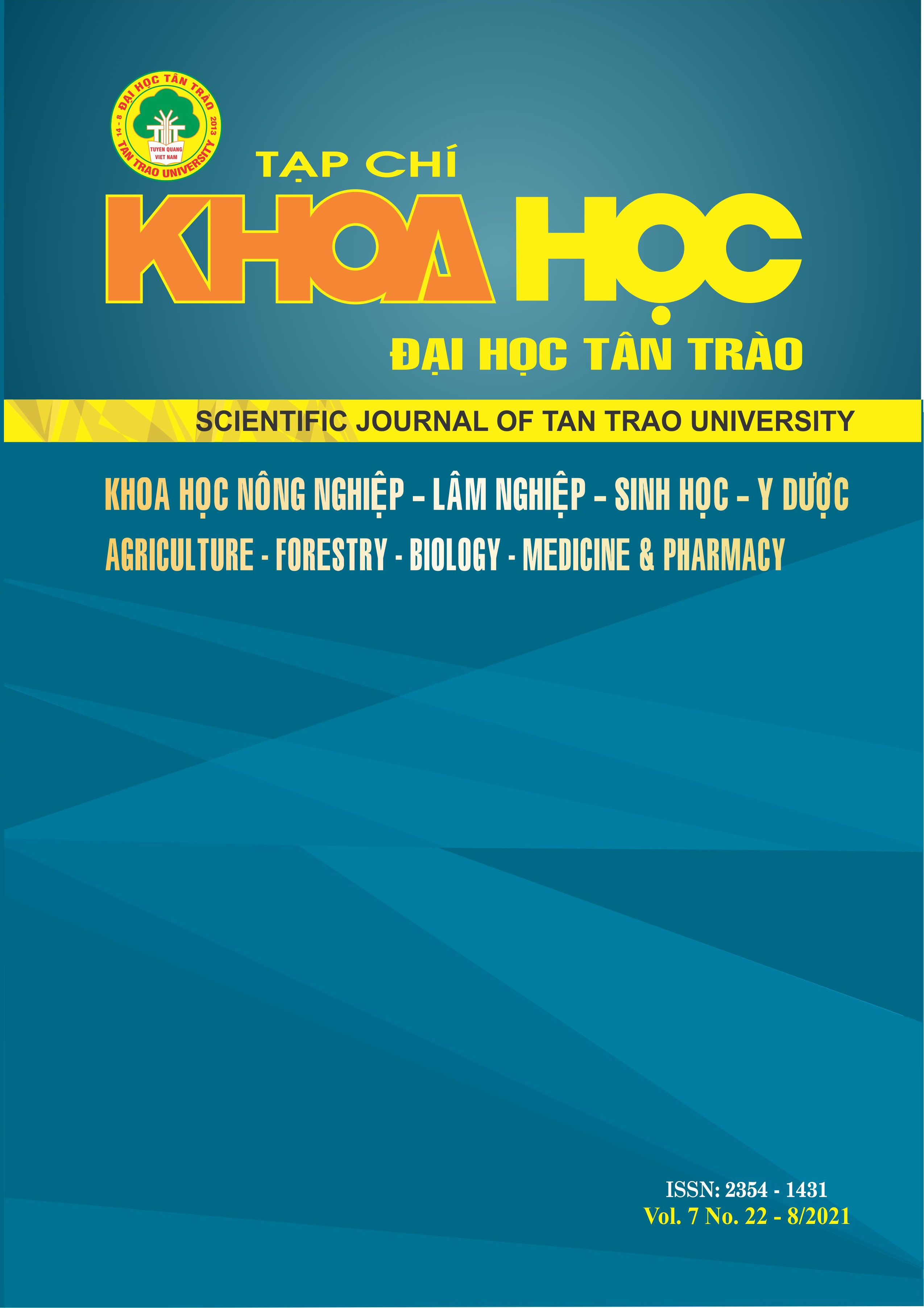RELATIONSHIP BETWEEN BURROWS AND CRAB DENSITY IN MANGROVE ECOSYSTEM OF HAU LOC DISTRICT, THANH HOA PROVINCE
DOI:
https://doi.org/10.51453/2354-1431/2021/565Keywords:
Relationship, burrows, crab density, mangrove, Hau Loc, Thanh HoaAbstract
The study on the relationship between burrows and crab density in the mangrove ecosystem of Hau Loc district, Thanh Hoa province carried out in December 2020 at 19 sites representing 3 habitats in the study area. The results showed that the burrows and the crabs density changed markedly with the increasing trend from ith an increasing trend from under-5-year-old forest, sparse forest, low tree forest to forest habitat over 9 years old. At the survey sites, the higher the forest age, the greater the coverage, the higher the amount of organic humus from the falling matter, the higher the density of burrows (which can reach more than 150 burrows/m2 and crab density can reach nearly 50 inds/m2). The correlation between burrows and crab density has been determined in the habitats and in the entire mangrove ecosystem. In which the correlation between burrows and crab density in newly planted forests under 5 years old is not close, in forests 5 - 9 years old and forests over 9 years old is positive and quite close (with R² = 0,6636 and R² = 0.,6734). The correlation between burrows and crab density in the entire mangrove area of Hau Loc district is also positive and close (with R² = 0,8481).
Downloads
References
[1] Cuc, N. T. K., Hien, H. T. (2020). Community-based mangrove rehabilitation and management in Hau Loc district, Thanh Hoa province. Journal of Irrigation and Environmental Science, 69: 43-49.
[2] Pestana, D.F., Pülmanns, N., Nordhaus, I. et al. (2017). The influence of crab burrows on sediment salinity during the dry season in a Rhizophora- dominated mangrove forest in North Brazil. Hydrobiologia, 803:295 – 305.
[3] Salgado, K. C. P., McGuinness, K. A. (2006). A Comparison of Methods for Estimating Relative Abundance of Grapsid Crabs. Wetlands Ecology and Management, 14(1):1-9.
[4] Sasekuma, A. (1984). Methods for the study of mangrove fauna. The mangrove ecosystem: Research methods. Unesco. 145-159.
[5] Valero-Pacheco, E., Alvarez, F., Abarca-Arenas, L., Escobar, M. (2007). Population density and activity pattern of the ghost crab, Ocypode quadrata, in Veracruz, Mexico. Crustaceana, 80: 313–325.
Downloads
Published
How to Cite
Issue
Section
License

This work is licensed under a Creative Commons Attribution-ShareAlike 4.0 International License.
All articles published in SJTTU are licensed under a Creative Commons Attribution-ShareAlike 4.0 International (CC BY-SA) license. This means anyone is free to copy, transform, or redistribute articles for any lawful purpose in any medium, provided they give appropriate attribution to the original author(s) and SJTTU, link to the license, indicate if changes were made, and redistribute any derivative work under the same license.
Copyright on articles is retained by the respective author(s), without restrictions. A non-exclusive license is granted to SJTTU to publish the article and identify itself as its original publisher, along with the commercial right to include the article in a hardcopy issue for sale to libraries and individuals.
Although the conditions of the CC BY-SA license don't apply to authors (as the copyright holder of your article, you have no restrictions on your rights), by submitting to SJTTU, authors recognize the rights of readers, and must grant any third party the right to use their article to the extent provided by the license.


